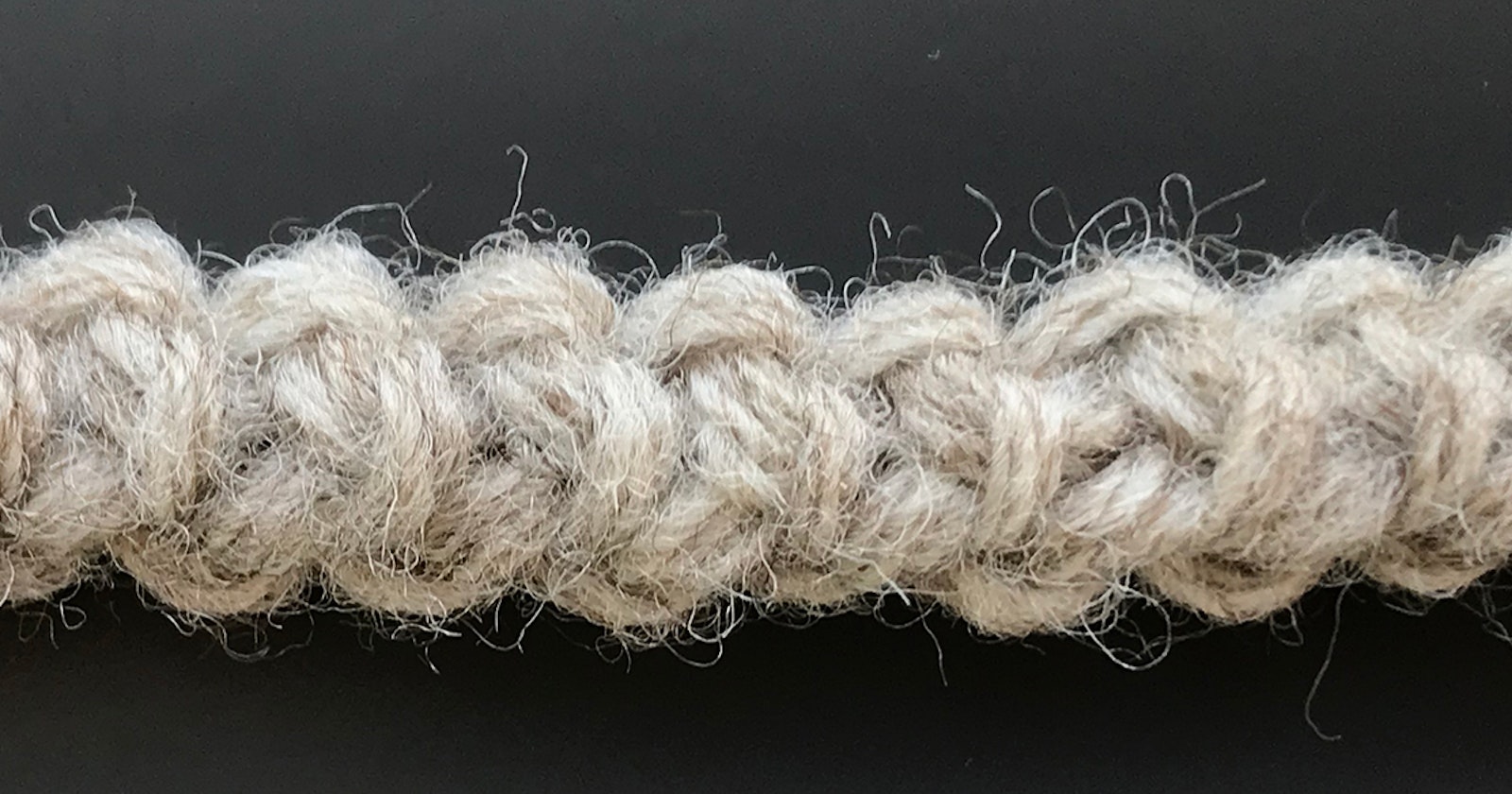Romanian cord, also called Romanian braid, can be used for straps, edgings, or ties. A regular crochet chain will stretch and grow thinner over time, but the Romanian cord technique creates a stronger, more stable cord to use for a drawstring. This firm, somewhat flat, construction can feel awkward to create at first but is a fast and useful technique when you get the hang of it.
Romanian cord or braid is also used to form the base of Romanian point lace. In PieceWork, January/February 2001, author Bart Elwell shares more. “In Romanian point lace, a three-dimensional braid outlines the pattern and forms a framework upon which needle-lace fillings and wrapped, twisted, or needle-woven bars are worked. This sturdy lace is traditionally worked in white or ecru. The braid itself has such a complex structure and consistent quality that it appears to be machine made; it is actually crocheted. The origins of Romanian point lace are unknown, but it is thought to have been developed in central Europe in the eighteenth century, and eventually spread to Romania.”
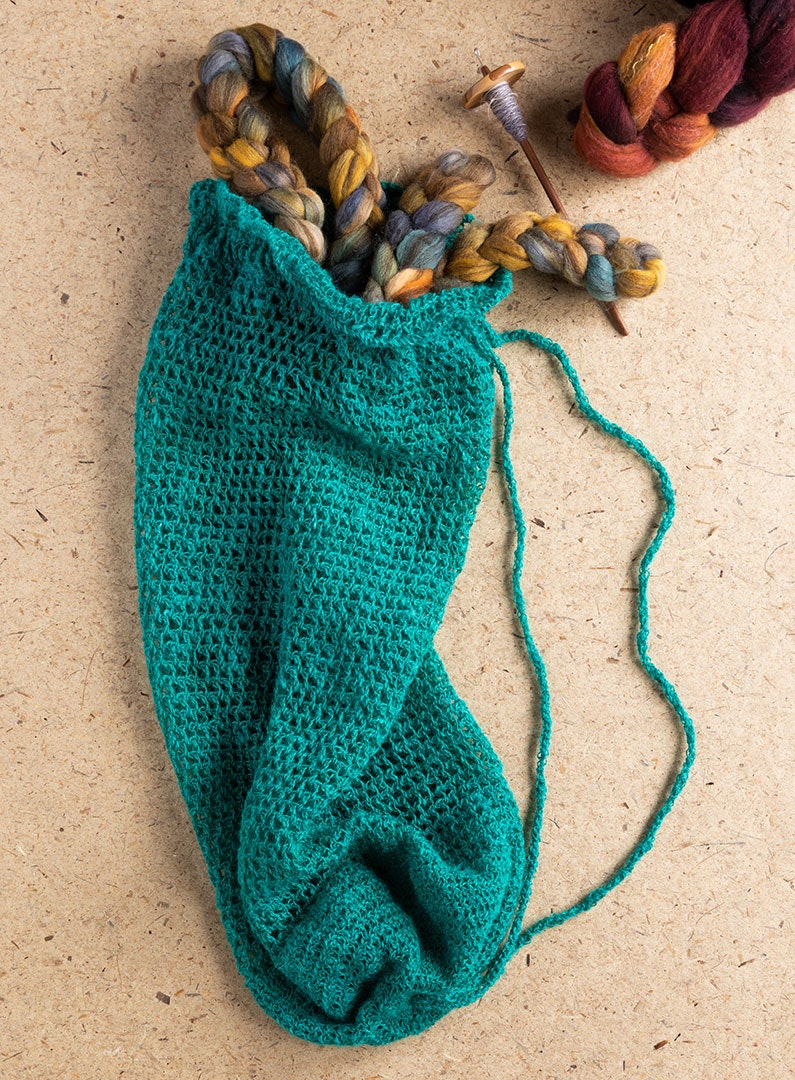
Find the instructions for Katrina King’s Crocheted Peddler’s Pack in the Fall 2020 issue of Spin Off. Photo by Matt Graves
Here are a few tips:
- Turn cord in the same direction as if flipping a page in a book.
- Tension is important. If your stitches are too tight, creating this cord will be tedious. Try loosening it up and see if you are more comfortable. If your tension is too loose, you’ll have untidy loops that form on the sides of the braid.
- The braid feels much easier to create once you have an inch or two of the pattern established. Not sure you have it right? Keep going and see if you hit your groove. Then, try restarting and see if the beginning looks better.
Instructions
Row 1 Ch 2, sc in 2nd ch from hook, turn.
Row 2 Sc in horizontal bar at end of row (cord edge), turn.
Row 3 Sc in 2 horizontal bars at end of row (cord edge), turn.
Rep Row 3 for patt until cord measures desired length, fasten off.
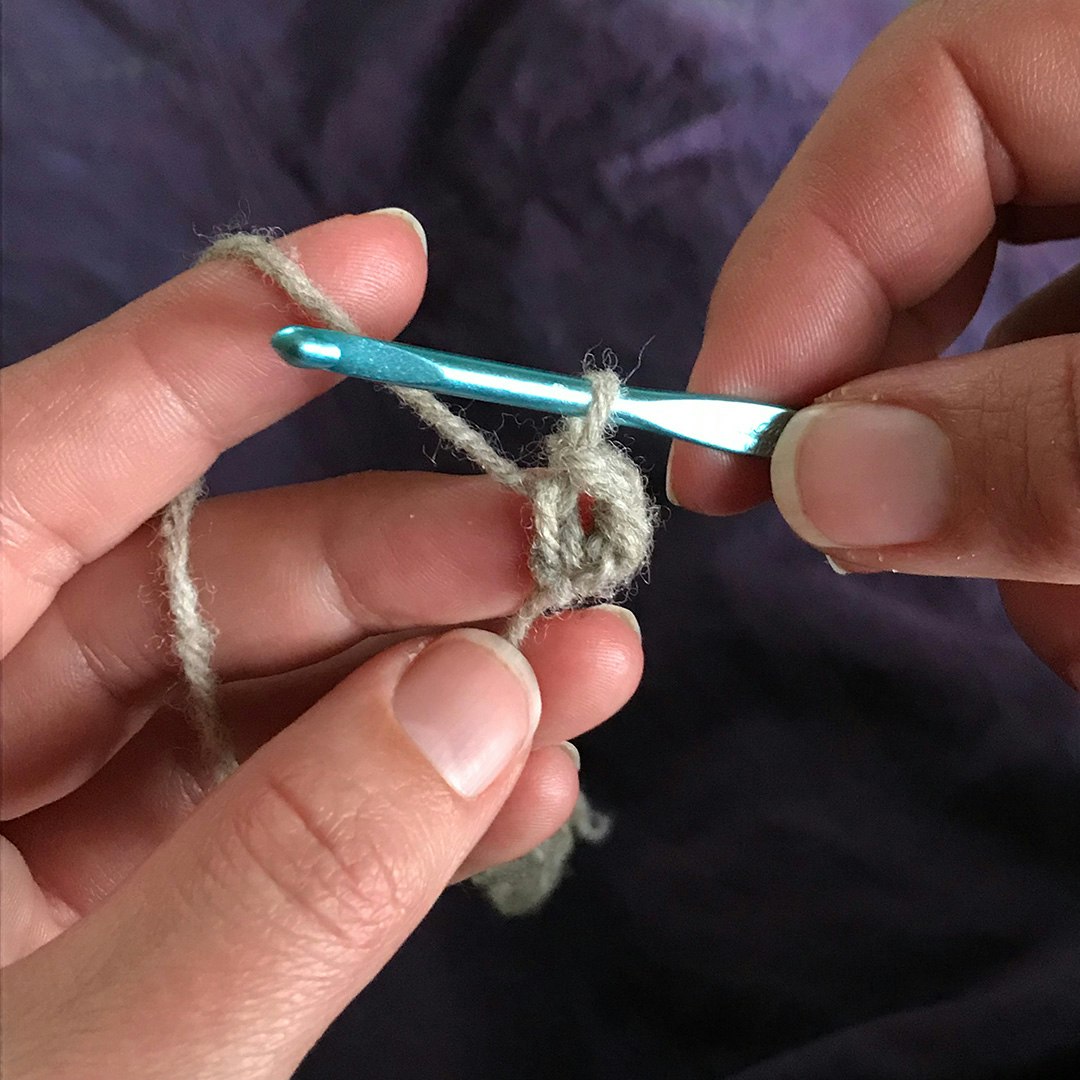
Chain 2 and create a single crochet in the second chain from the hook (Row 1).
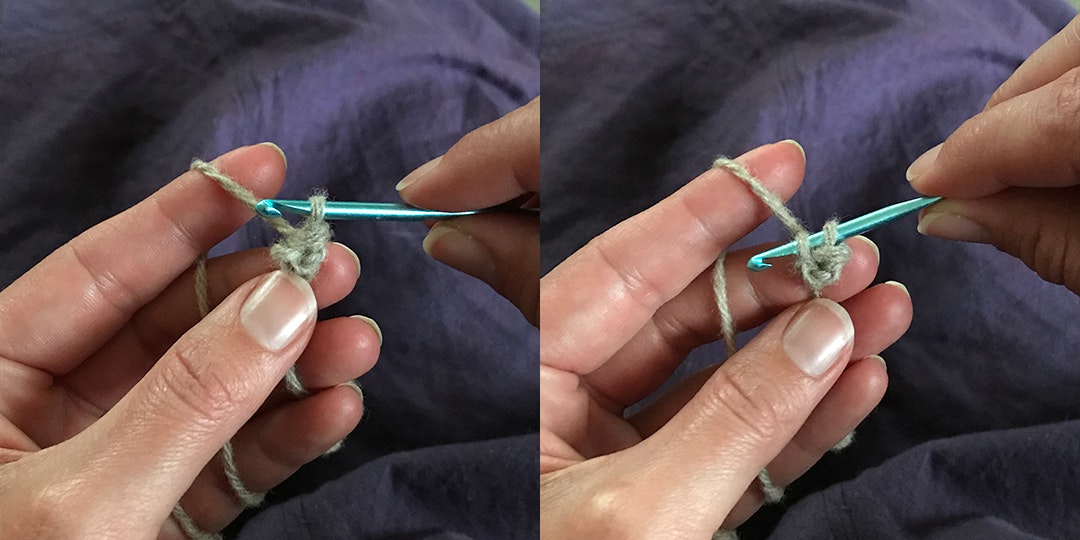
After you turn the work, do you see the horizontal bar at the end of the row (left)? Pick it up (right) and work a single crochet (Row 2). This will feel a little odd because it pulls up the work.
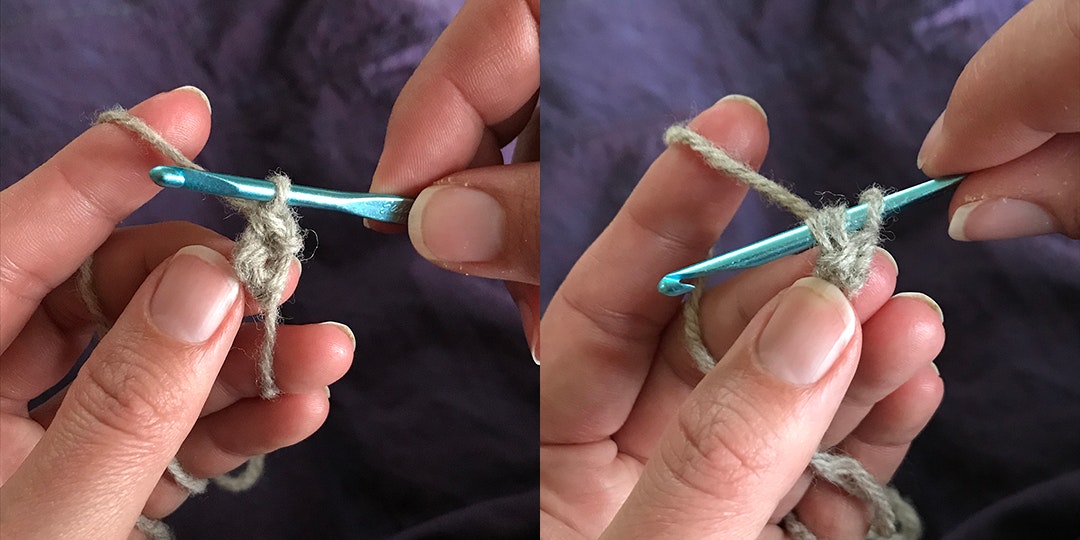
After you turn this time, you’ll see two bars at the end of the row (left). Insert the hook under both (right) and work a single crochet.
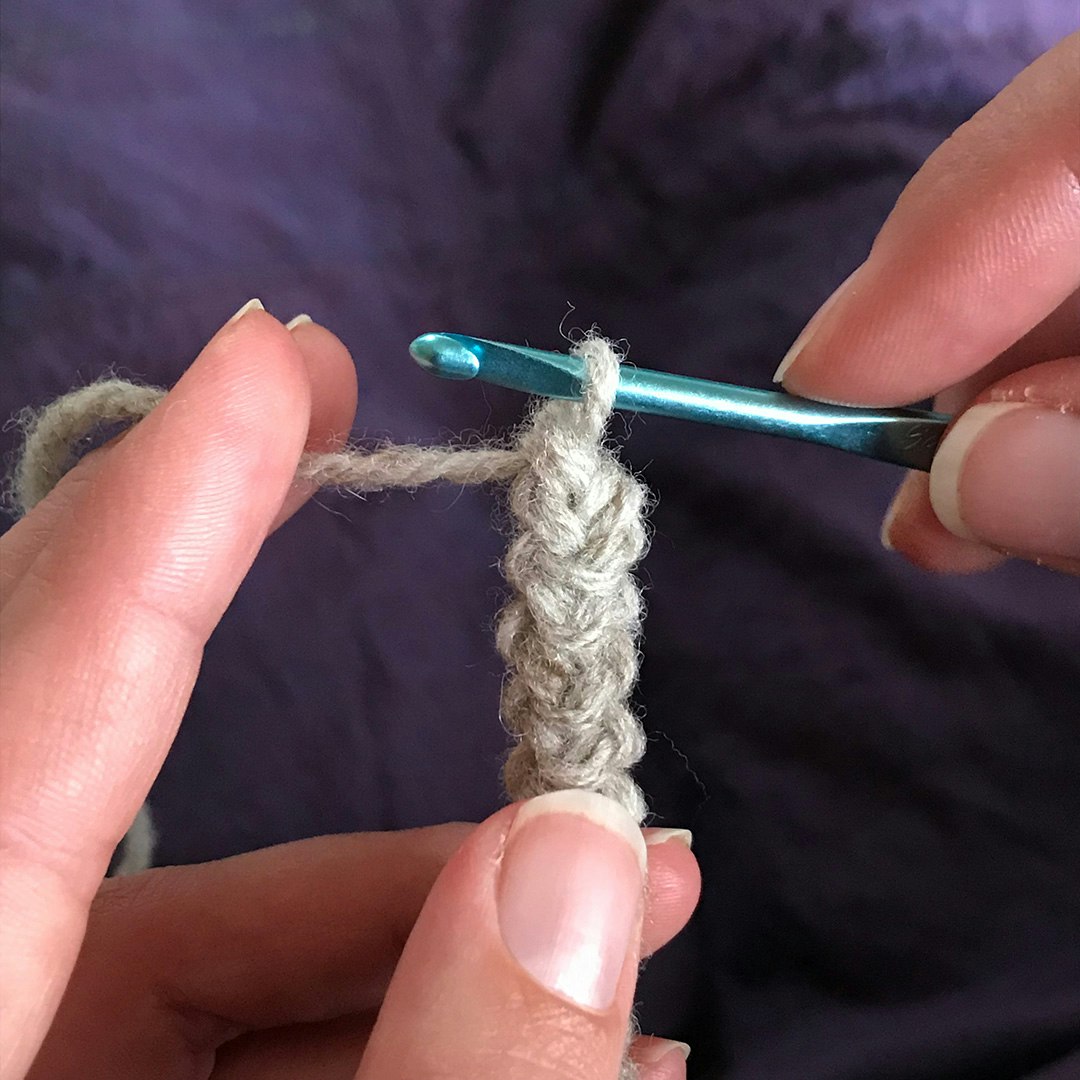
After you have worked Row 2, it is easy to fall into a rhythm. Watch the cord grow and your handspun become a sturdy strap, edging for a skirt, or trim for your favorite mittens.
Resources
Elwell, Bart. “Ioana Bodrojan’s Romanian Point Lace.” PieceWork, January/February 2001, pages 43–44.
—Kate

